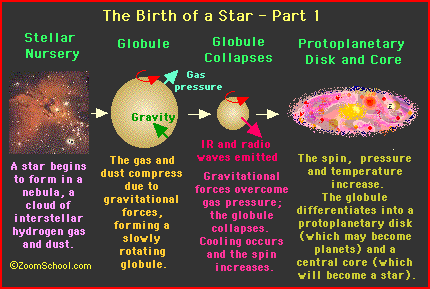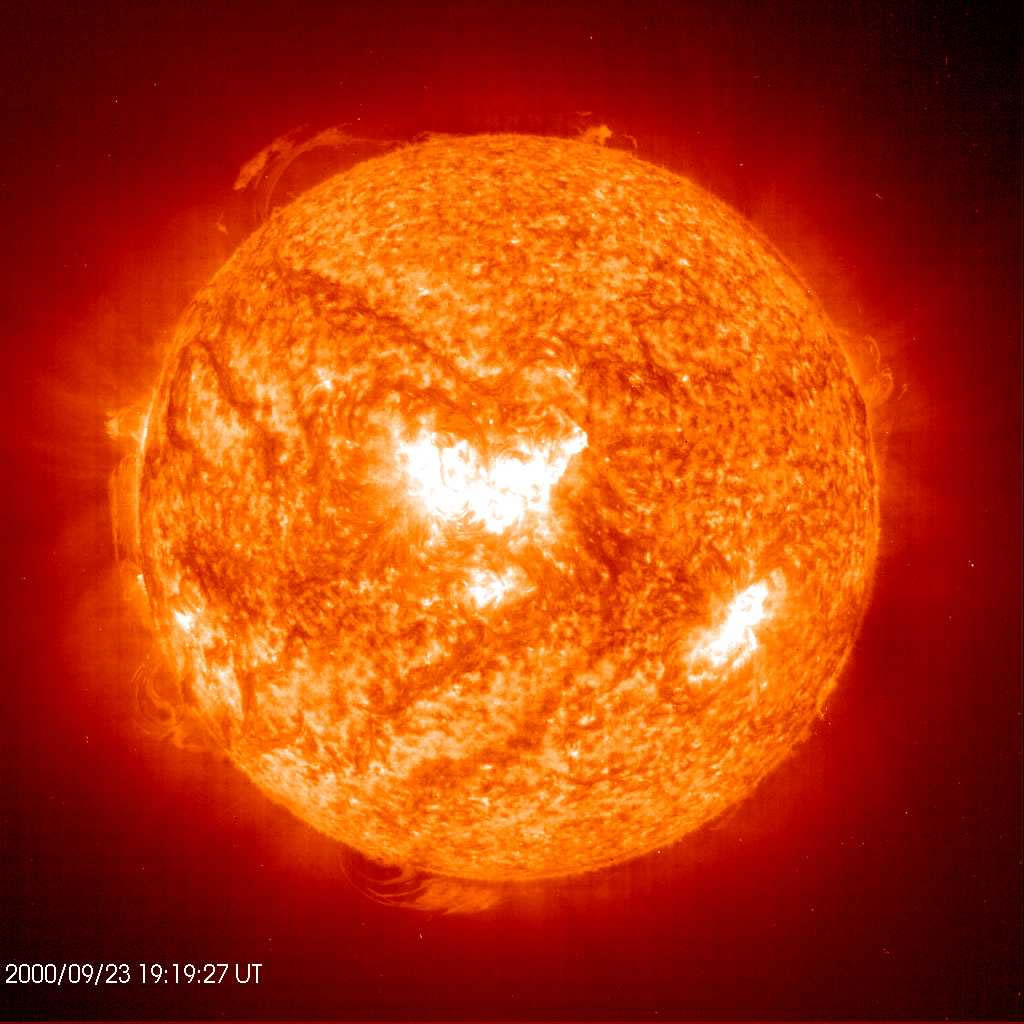The Birth of a Star( More in depth )
The birth of a star is simply the death of the star before it. Usually found in the spiral arms of galaxies, the remnants of a supernovae collect into a large mass of dust and gas (most of which is hydrogen). In these stellar nurseries, millennia may pass until a passing star or some other massive body passes and its gravity stirs the nebula. The gravity of the heavy mass causes swirls and ripples throughout the nebula. An example is spreading marbles out on a trampoline. If a large marble was rolled on the trampoline the smaller marbles would collect in its path. The star matter does the exact same thing. This process is known as accretion and is the first step in star formation.
A nebula has the ability to form thousand of stars. The dust and gasses will begin to compress and its self gravity may overcome its pressure and fluidity. If this happens the star is left unstable and likely to collapse. Such a collapse does not happen like an implosion, but since the cloud has a finite angular momentum, the cloud will collapse in a rotational motion. To help explain the idea of angular momentum, think of a thousand marbles all coming together in space. As the marbles attracted to one another, the marbles travelling the fastest would pass the marbles coming toward them. The gravity would then pull these "runaway" marbles back together and as gravity did so the marbles would begin to spin around one another (similar to the way our planets revolve around the sun.) As the mass contracts it spins faster and faster until its flattens into a disk with a large central region. The disk is called the protoplanetary disk and the central mass is called a protostar.
Soon gravity begins to contract the protostar very quickly. The pressure build up and friction heats the star. Once the temperature reaches 10,000,000 kelvin the star begins to combine hydrogen, which when chemically combined form helium. The fusion is what produces the star's light, and thus a star is born. Finally as the pressure of the contracting star increases it soon equals the force of gravity upon it. When this happens the star ceases to contract and is said to be in hydrostatic equalibrium. The star has reached the longest and most stable point in its life.
|





